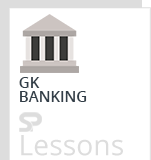 Introduction
Introduction
What is an Insurance? According to the dictionary and different insurance policies, Insurance is defined as “an arrangement by which a company or the state undertakes to provide a guarantee of compensation for specified loss, damage, illness, or death in return for the payment of a specified premium.” Thus, Insurance is a means of protection from financial loss. Insurance, in short, is a form of risk management, primarily used to hedge against the risk of a contingent or uncertain loss. The insurance provider is known as an insurer, insurance company, insurance carrier or underwriter. Insurance Awareness is an important section in several recruitment exams in India, primarily in the insurance sector.
Insurance Awareness Quiz 36 includes Questions and Answers related to the following topics: History of Insurance sectors in India, Insurance Organizations in India, Important Insurance Terms, Insurance Abbreviations & Insurance related information. Insurance Awareness Quiz 36 is extremely important for aspirants of Insurance related recruitments such as UIIC, OICL, LIC, HFL, AAO, etc.
 Quiz
Quiz
1. What is the full form of CPA in insurance?
-
A. Common Person Annuity
B. Compulsory Personal Accident
C. Covering Projected Aspect
D. Closed Policy Assurance
-
A. Retrocession
B. Reinsurance
C. Retention
D. Retrospection
-
A. Retrocession
B. Reinsurance
C. Retention
D. Retrospective
-
A. health
B. car
C. life
D. house
-
A. Debt Policy
B. Credit Life
C. Support Plan
D. Death Benefit
1. Inadequate insurance coverage held by a policy holder where the limits may not be high enough to cover the full expenses of a claim is known as__________
-
A. Low-insurance
B. Under-insurance
C. Doubtful-insurance
D. Cheap-insurance
-
A. General Account
B. Insurance Account
C. Savings Account
D. Business Account
-
A. actual cash value
B. up-to-date maximum
C. Gross premiums were written
D. out-of-pocket maximum
-
A. Extra offer Benefits
B. Existence of Beneficiary
C. Explanation of Benefits
D. Emergence of Bancassurance
-
A. Waiting Period
B. Turning Period
C. Halt Period
D. Grace Period
1. An insurance policy issued at a higher premium rate than standard because of less than average health conditions or undesirable lifestyles is known as____________.
-
A. Loss policy
B. Rated policy
C. With-Profit policy
D. Systematic policy
-
A. Waiting period
B. Finite period
C. Recoupment
D. Contestable period
-
A. Female
B. Male
C. Children
D. There is no such distribution
-
A. Decrease
B. No change
C. Increase
D. Cannot be determined
-
A. Health Management Obligation
B. Health Medicare Office
C. Health Maintenance Organization
D. Health Monitoring Ombudsman



